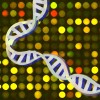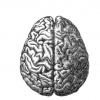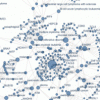Origin of ALS discovered
 ALS (amyotrophic lateral schlerosis, a.k.a. Lou Gehrig’s disease) is a devastating disease which kills motor neurons, leaving patients paralyzed and unable to function. Although patients remain aware and for the most part mentally undamaged, most patients die within 2-3 of onset as the disease progressively leaves them trapped in a body that is unable to function. As motor neurons die, the person’s muscles weaken and atrophy, and patients will eventually develop respiratory difficulties leading to death.
ALS (amyotrophic lateral schlerosis, a.k.a. Lou Gehrig’s disease) is a devastating disease which kills motor neurons, leaving patients paralyzed and unable to function. Although patients remain aware and for the most part mentally undamaged, most patients die within 2-3 of onset as the disease progressively leaves them trapped in a body that is unable to function. As motor neurons die, the person’s muscles weaken and atrophy, and patients will eventually develop respiratory difficulties leading to death.
Unfortunately very little is known about how this disease develops, so a new breakthrough published in Neuron (and by a second group also in Neuron) is reason for hope. Work by two independent groups uncovered a locus on chromosome 9 (actually an expansion of repetitive DNA in a non-coding region called C9ORF72) is implicated in at least a third of ALS cases. This sequence variation seems to affect the cells ability to recycle and cope with damaged proteins; when these proteins fail to be properly processed, the cell is damaged an ALS is the result. While this research may not explain all the causes of ALS, it is an important landmark in the battle against this illness, and provides a target for future research and therapeutic intervention.
| Print article | This entry was posted by Jason Williams on October 24, 2011 at 11:05 am, and is filed under G2C Online. Follow any responses to this post through RSS 2.0. You can leave a response or trackback from your own site. |







